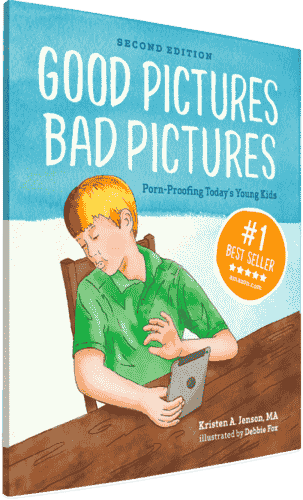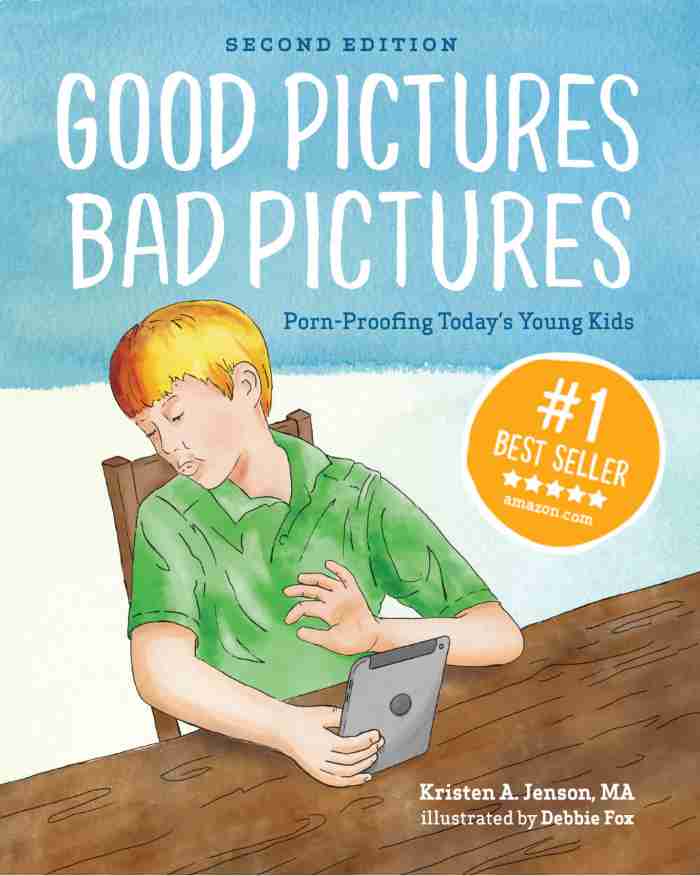.webp)
.webp)
How the Average Kid Gets Sex Trafficked: Top 6 Ways to Protect Them
There's a troubling connection between pornography and sex trafficking, posing a significant risk to the average kid. It’s easy to fall into the trap of, “not my child,” but the reality is stark — every child who spends time online is at risk. Sex traffickers lurk on popular platforms that kids enjoy, and begin a grooming process that often includes pornography.
.webp)
The shocking facts
According to the annual Federal Human Trafficking Report, over 900 sex trafficking cases currently plague the federal legal system (860 pending, 178 new), with a staggering 34% involving minors. The youngest is age 7. Alarmingly, the primary method that sex traffickers use to recruit victims is the internet. According to the report, the top five platforms used for recruiting, in order, are:
- Snapchat
- Grindr
- Kik
These major platforms have become virtual hunting grounds for sex traffickers, preying on vulnerable individuals, including children. Court records from a case that New Mexico has brought against Meta revealed Meta’s own internal documents identified that:
100,000 children every day received sexual harassment, such as pictures of adult genitalia, on the platforms.
This is a shocking admission! 100K kids EVERY DAY on ONE platform! That is a staggering 36,500,000 children per year!
Related: Child Sex Trafficking–The Most Dangerous Myth and 3 Ways to Keep Your Kid Safe
Section 230: The legal shield and its consequences
But there’s a big problem standing in the way of justice. It’s called Section 230 of the Communications Decency Act, and it grants platforms immunity from the content posted by third parties. This means platforms can’t be held responsible for what others post on their sites, even if it's harmful, or illegal, effectively shielding them from accountability.
Traffickers have exploited this legal loophole to operate covertly on online platforms, while these very platforms have reaped profits from the circulation of trafficking content and its associated sexually exploitative images and videos.
A heart-wrenching account
One such example is that of a young boy who was sex trafficked online at the age of 13 on Snapchat. Posing as a 16-year-old girl, a predator coerced him into sharing nude images of himself. Once the initial pictures were sent, he was then extorted into sharing more. Three years later, at the age of 16, the photos surfaced on Twitter (now X) and were circulated around his high school. With the help of his mom, school officials and law enforcement were contacted. They also made reports to Twitter, provided the required documentation proving he was a minor, and requested that Twitter take the photos down and suspend the accounts distributing them.
Shockingly, Twitter responded,
“We’ve reviewed the content, and didn’t find a violation of our policies, so no action will be taken at this time.”
The victim’s mother connected with the Department of Homeland Security where a federal agent demanded that Twitter suspend the accounts distributing the child sexual abuse material (CSAM). Only after this take-down demand by the US Government did Twitter take action.
Astonishingly, the 9th Circuit has ruled against the boys in this case. At the heart of the matter is a litany of terrible court rulings which connect to CDA 230—the tech industry’s ticket out of any and all liability.
Related: Pedophiles Hunt Kids in Popular Gaming Apps: Roblox, Minecraft, & Fortnite
3 ways pornography and trafficking intersect
The National Center on Sexual Exploitation (NCOSE) has identified several ways that porn contributes to sex trafficking. Here are just three.
1. Pornography grooms victims
Pornography is used to groom young victims who lack sexual experience. It is presented to children to introduce sex, including various sex acts. By exposing children to explicit material, perpetrators seek to initiate them into sexual activities, paving the way for sexual exploitation.
Related: The #1 Thing Kids Need to Know to Stop Grooming and Prevent Sexual Abuse
2. Victims trafficked for production of pornography
Sex trafficked individuals are also used in the production of pornography. This exploitation commodifies victims' abuse for profit. Victims, including children, are coerced or deceived into participating in sexual acts. Their abuse and rapes are recorded and then distributed — even on mainstream pornography platforms.
CSAM is not just a dark web problem, it's a surface web issue. Yes, there is a tremendous amount of child exploitation happening on the dark web, but you do not have to go to the dark web to find this kind of content. News articles have reported and lawsuits allege it's accessible on mainstream pornography platforms, such as Pornhub and X videos.
One notorious mainstream site, Pornhub, admitted to receiving proceeds from sex trafficking material on their site. In a notable case, the federal government brought charges against pornographers for using fraudulent tactics to coerce young women into performing pornography.
When the material was distributed on a mainstream website, the victims were exposed and their lives ruined. Consequently, the pornographers were convicted of sex trafficking. The trafficked victims sued Pornhub who admitted to facilitating sex trafficking and are consequently being monitored by the Department of Justice.
The NCOSE Law Center is representing victims in similar cases where their abuse material was distributed on mainstream pornography sites which allegedly profited from the material.
3. Pornography is advertising for trafficking
Pornography functions as a form of advertising to people who would purchase other people. A trafficker gets a victim under their control and takes sexually explicit images of them. Those images then get posted as ads meant to lure in buyers. So the pornography itself becomes a form of advertising human beings as commodities for sale.
[[CTA]]
6 Ways for parents to safeguard their kids
In the face of such pervasive threats, parents must equip themselves with the knowledge and tools to safeguard their children from harm. Here are actionable steps you can take today:
- Limit technology exposure. Enforce rules such as no computers in bedrooms and nightly phone turn-ins to mitigate the risk of online exploitation.
- Utilize parental controls. These controls can restrict access to certain apps and monitor online activities, ensuring children are shielded from harmful content and predatory individuals.
- Educate on online safety. Initiate open conversations with children about the dangers of online interactions, emphasizing the importance of not communicating with unknown individuals online. Brain Defense Digital Safety curriculum is a great tool that teaches kids these and many more important digital safety skills.
- Delay, delay, delay. Hold off on giving your child access to social media until at least 16 years of age, and ensure they have guardrails for the parts of the web they do access.
- Invest in kid-safe technology. Invest in kid-safe phones and devices equipped with robust parental controls that help parents restrict and monitor what their kids can access and who they can communicate with.
- Employ Good Pictures Bad Pictures: Porn-Proofing Todays Young Kids (ages 7-12), and Good Pictures Bad Pictures Jr.: A Simple Plan to Protect Young Minds (ages 3-6) as a discussion tool to teach kids about the harms of pornography in an age-appropriate way. These books are comfortable to read aloud with kids and feature gentle language making this daunting topic easy to tackle.
Empower your child to reject porn
Lisa Thompson of NCOSE emphatically shared:
"There's no doubt in my mind — none, nada, zero, that a child who has been educated about how to reject pornography would also be safer from sex traffickers and sexual exploiters of any kind."
Teaching them that their private parts are not for pictures gives them an extra layer of protection. When kids know this, they already have their guard up. Knowing who they can trust to turn to if something feels weird or off is also crucial. This knowledge will make a child safer and have a broader effect on other forms of grooming for sexual abuse and exploitation.
They will also be safer from someone who may try to show them porn to groom them. If they’ve been taught to reject pornography, they’re not going to look at it. They’re going to say, “Oh that’s not a good picture, I’m not going to look at that,” and then they’ll tell a trusted adult, just like Good Pictures Bad Pictures: Porn-Proofing Today’s Young Kids teaches.
Related: The Compelling Science Behind Good Pictures Bad Pictures
Power to combat
While the connections between pornography and sex trafficking pose a significant threat to kids, parents have the power to combat it. The predatory tactics of traffickers can be disrupted by:
- being informed and equipped with tools to safeguard kids from online exploitation,
- implementing proactive measures such as limiting time online and utilizing parental controls, and
- educating kids to reject porn.
Let us stand together armed with the awareness and vigilance that empowers kids to defend themselves and diminishes the power of the sex-trafficking industry.
.webp)


Good Pictures Bad Pictures
"I really like the no-shame approach the author takes. It's so much more than just 'don't watch or look at porn.' It gave my children a real understanding about the brain and its natural response to pornography, how it can affect you if you look at it, and how to be prepared when you do come across it (since, let's face it... it's gonna happen at some point)." -Amazon Review by D.O.
.webp)
.webp)





